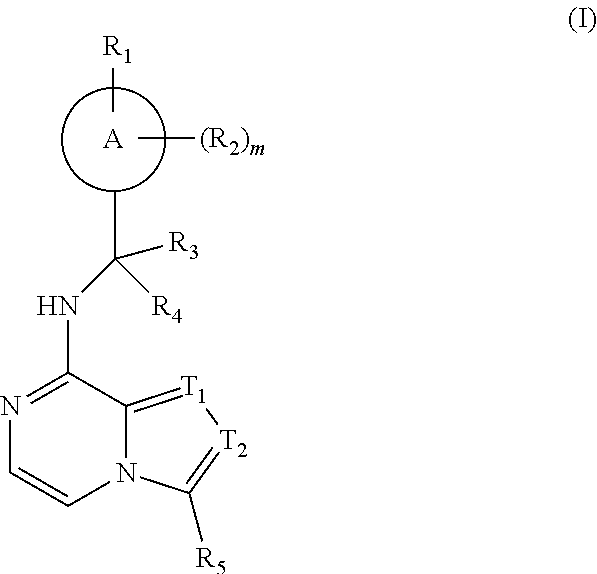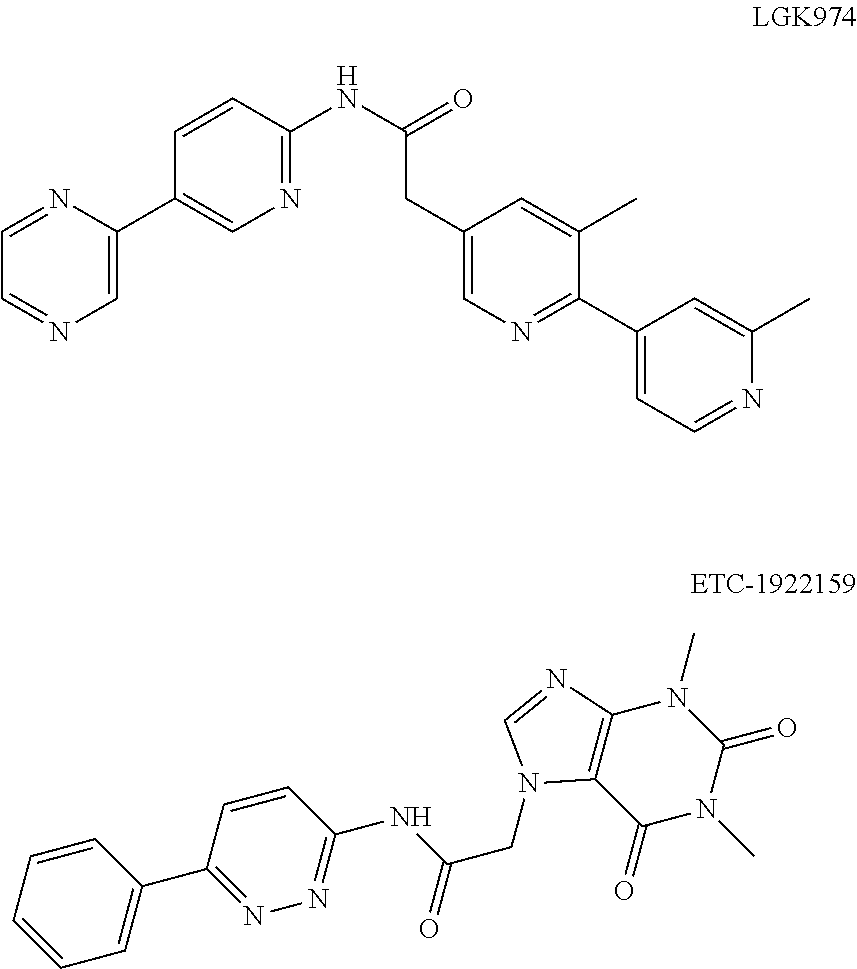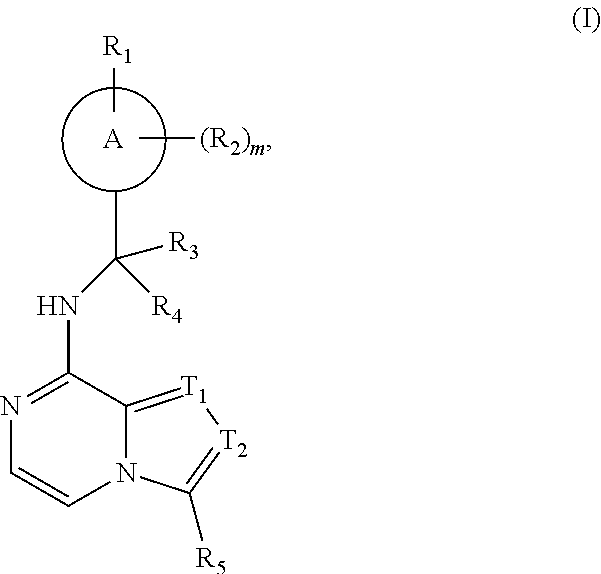Compound as porcupine inhibitor and use thereof
a technology of porcupine inhibitors and compounds, applied in the field of porcupine inhibitors, can solve the problems of slow metabolism, large side effects, and short half-life of porcupine inhibitors, and achieve the effect of improving the activity of inhibiting tumors, good inhibitory effect, and excellent tumor growth inhibitory activity
- Summary
- Abstract
- Description
- Claims
- Application Information
AI Technical Summary
Benefits of technology
Problems solved by technology
Method used
Image
Examples
example 1
[0125]
[0126]Route for Synthesis:
Step 1
[0127]The compound bromoacetaldehyde diethyl acetal (7.61 g, 38.60 mmol) was dissolved in water (10 mL) and trifluoroacetic acid (1.14 mL), and stirred at 25° C. for 1 hour. After the reaction was completed, the reaction mixture was diluted with water (30 ml), and the mixture was extracted with ethyl acetate (15 ml×3). The organic phases were combined, dried with anhydrous sodium sulfate, filtered, and concentrated under reduced pressure. The residue and compound 1-1 (2 g, 15.44 mmol) were dissolved in ethylene glycol dimethyl ether (25 ml) and then trifluoroacetic acid (1.14 ml) was added. The reaction mixture was stirred at 90° C. for 3 hours. After the reaction was completed, the reaction solution was poured into water (50 ml) and ethyl acetate (30 ml). The mixture was adjusted to pH 8 with saturated aqueous sodium bicarbonate solution, and extracted with ethyl acetate (30 ml×3). The organic phases were combined, dried with anhydrous sodium s...
example 2
[0134]
[0135]Route for Synthesis:
[0136]Compound 1-4 (80 mg, 195.46 μmol) was dissolved in dioxane (2 ml) and water (0.5 ml), and then 3-pyridineboronic acid (31.23 mg, 254.10 μmol), sodium carbonate (41.43 mg, 390.93 μmol) and 1,1′-bis(diphenylphosphino)ferrocene palladium dichloride (14.30 mg, 19.55 μmol) were added in sequence. The reaction mixture was stirred at 100° C. under nitrogen protection for 16 hours. After the reaction was completed, the reaction solution was concentrated under reduced pressure. Water was added (30 ml), and the mixture was extracted with ethyl acetate (15 ml×3). The organic phases were combined, dried with anhydrous sodium sulfate, filtered, and concentrated under reduced pressure. The residue was isolated by thin-layer chromatography, and then isolated by high-performance liquid chromatography (formic acid condition) to give compound 2.
[0137]1H NMR (400 MHz, CD3OD) δ ppm 8.84 (s, 1H), 8.65 (br d, J=4.5 Hz, 1H), 8.54 (s, 1H), 8.51 (d, J=5.3 Hz, 1H), 8.15 ...
example 3
[0138]
[0139]Route for Synthesis:
[0140]The preparation method was the same as that of Example 2, except of using 4-fluorophenylboronic acid (17.55 mg, 125.46 μmol) to replace 3-pyridineboronic acid (31.23 mg, 254.10 μmol). After the reaction was completed, the reaction solution was extracted with ethyl acetate (5 ml×3). The organic phase was washed with saturated brine (10 ml×2), dried with anhydrous sodium sulfate, filtered, and concentrated under reduced pressure. The residue was isolated by high-performance liquid chromatography (formic acid condition) to give the compound 3.
[0141]1H NMR (400 MHz, CDCl3) δ 8.63 (d, 1H, J=1.6 Hz), 8.6-8.6 (m, 1H), 7.7-7.7 (m, 1H), 7.5-7.6 (m, 4H), 7.44 (d, 1H, J=4.8 Hz), 7.35 (s, 1H), 6.4-6.7 (m, 1H), 4.90 (d, 2H, J=6.0 Hz), 2.65 (s, 3H), 2.37 (s, 3H). MS-ESI Calculated [M+H]+ 424, Found 424.
PUM
| Property | Measurement | Unit |
|---|---|---|
| Radioactivity | aaaaa | aaaaa |
| Pharmaceutically acceptable | aaaaa | aaaaa |
Abstract
Description
Claims
Application Information
 Login to View More
Login to View More - R&D
- Intellectual Property
- Life Sciences
- Materials
- Tech Scout
- Unparalleled Data Quality
- Higher Quality Content
- 60% Fewer Hallucinations
Browse by: Latest US Patents, China's latest patents, Technical Efficacy Thesaurus, Application Domain, Technology Topic, Popular Technical Reports.
© 2025 PatSnap. All rights reserved.Legal|Privacy policy|Modern Slavery Act Transparency Statement|Sitemap|About US| Contact US: help@patsnap.com



